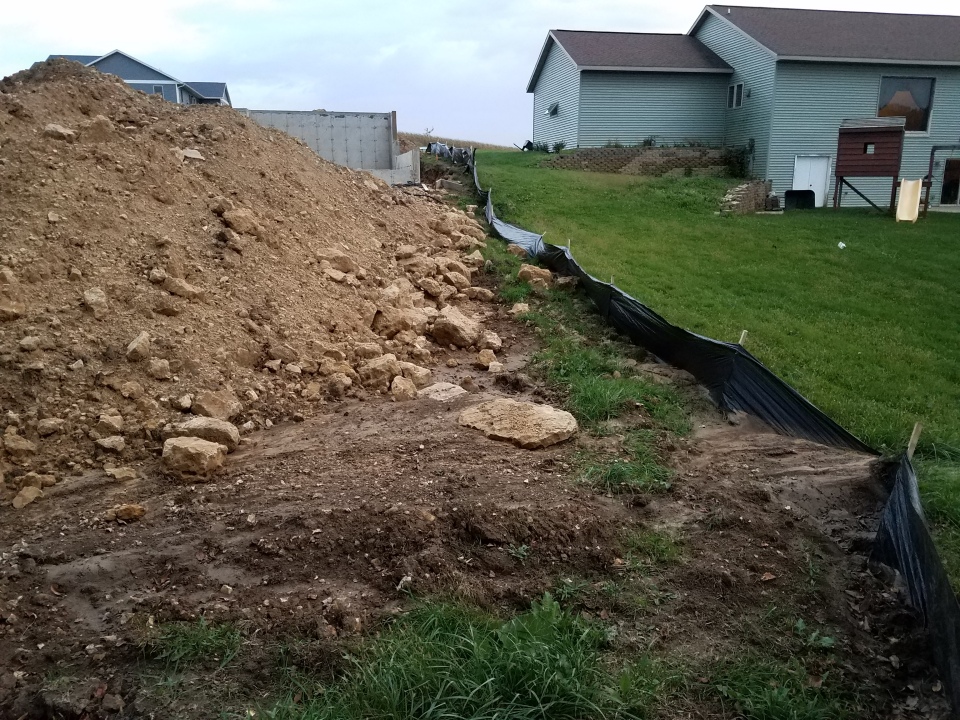September 22, 2018: The Village of Spring Green is built on an ancient deposition of sand. My lot, at the edge of town, was still farmed in a rotation of alfalfa, oats, and winter wheat. Irrigation rigs and regular infusions of chemical fertilizers made it worth it—-but under my watch, that will change.
I’m concerned about chemical blow-back and dust from farm operations and a little distressed about distant traffic noise. A dense, mixed planting of deciduous and evergreen trees and bushes along the west border will help—and keep cold winds at bay. The rustle of leaves will help mask highway drone. A small earth berm would add sound-deadening mass, and create a sense of enclosure while blocking and filtering soil runoff. Here’s how it could work:

What is home without a large vegetable garden? The topsoil Slaney scraped off was a thin layer, only about 6-8” deep. A scoop shaken with water and left to settle is an easy and accurate-enough way to test its composition. Google “Mason Jar Test”.
Measured, my soil is: 72% sand, 28% silt, with no discernible layer of clay
Ideal garden soil is: 40% sand, 40% silt, 20% clay
Classified, my soil is “Silty Sand” or “Loamy Sand”. It drains quickly (good for foundations), but can’t hold onto moisture or nutrients. For my garden to thrive, I’ll need to add clay and organic matter, with a top dressing of mulch to retain moisture.
Soil erosion is a real problem on most construction sites, and Wisconsin’s Uniform Dwelling Code is pretty strict about what you have to do to control the perimeter. My lots flattish terrain and the sandy soils ability to absorb water quickly means erosion or runoff (sheeting), shouldn’t be a problem—even in a heavy rain event. But protocols must be followed. Options include landscape fabric silt fence (most common), straw wattles (what Slaney recommended), or straw bales—which is what I chose. I agonized, because bales are by far more expensive—and heavy to handle. But I just couldn’t bring myself to buy a bunch of plastic, only to throw the muddy mess away after final grading and established ground covers stabilize the soil. Minimizing landfill waste is a key goal of POEMHOMES.
Straw wattles are better, with only a light weave of plastic containing the sausage-like things. But straw bales come clean (well, there is plastic baling twine). I could get them delivered from a local farmer and can use them later for mulch. With help from my son and his girlfriend, we worked our way around 300 bales—pounding two 2×2 stakes into each one. Spring oats, tossed on the piled up topsoil, should hold it together until next summer.

Later—my attention now keenly attuned to soil erosion—I noticed several very bad silt fence installations. Here’s one that’s been breached. I’m pleased to report that my bales have stayed intact, and there’s no apparent erosion.
